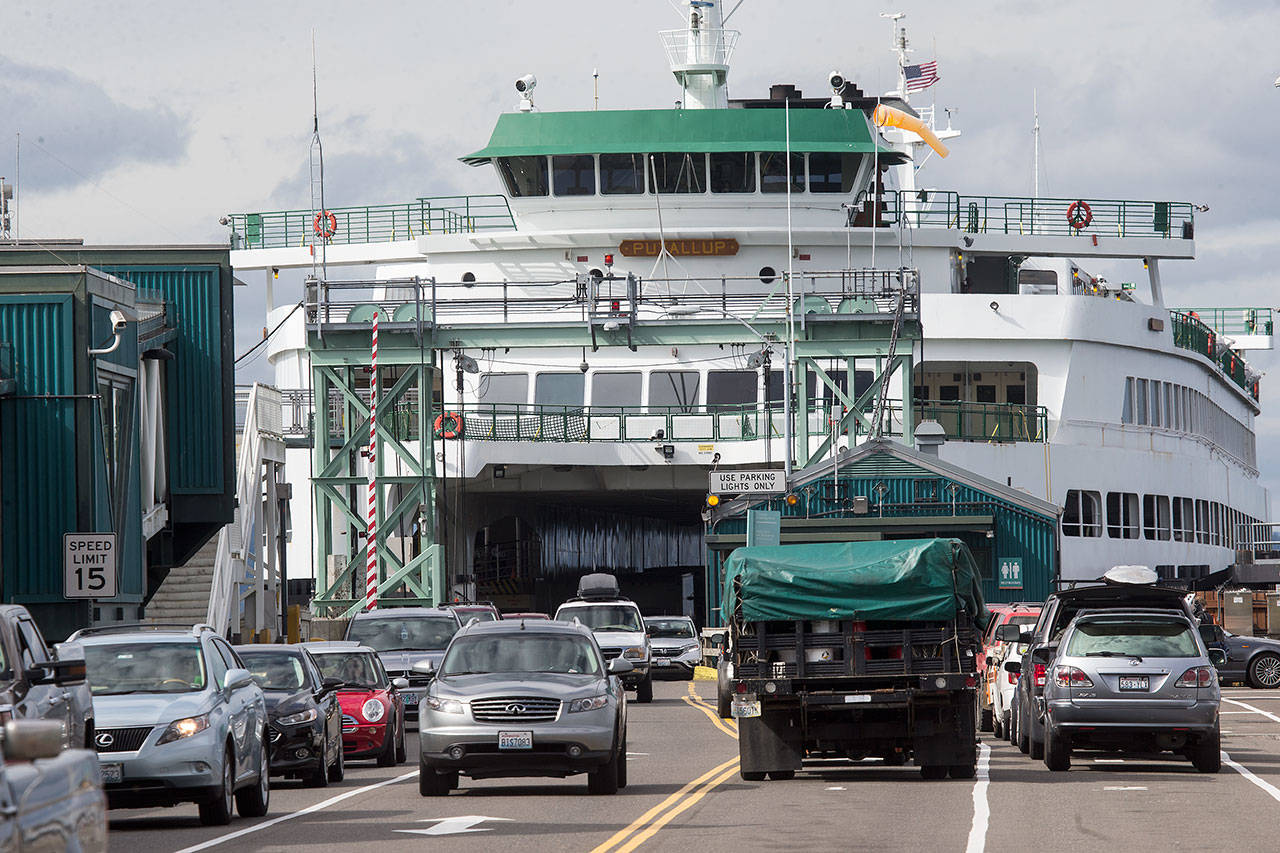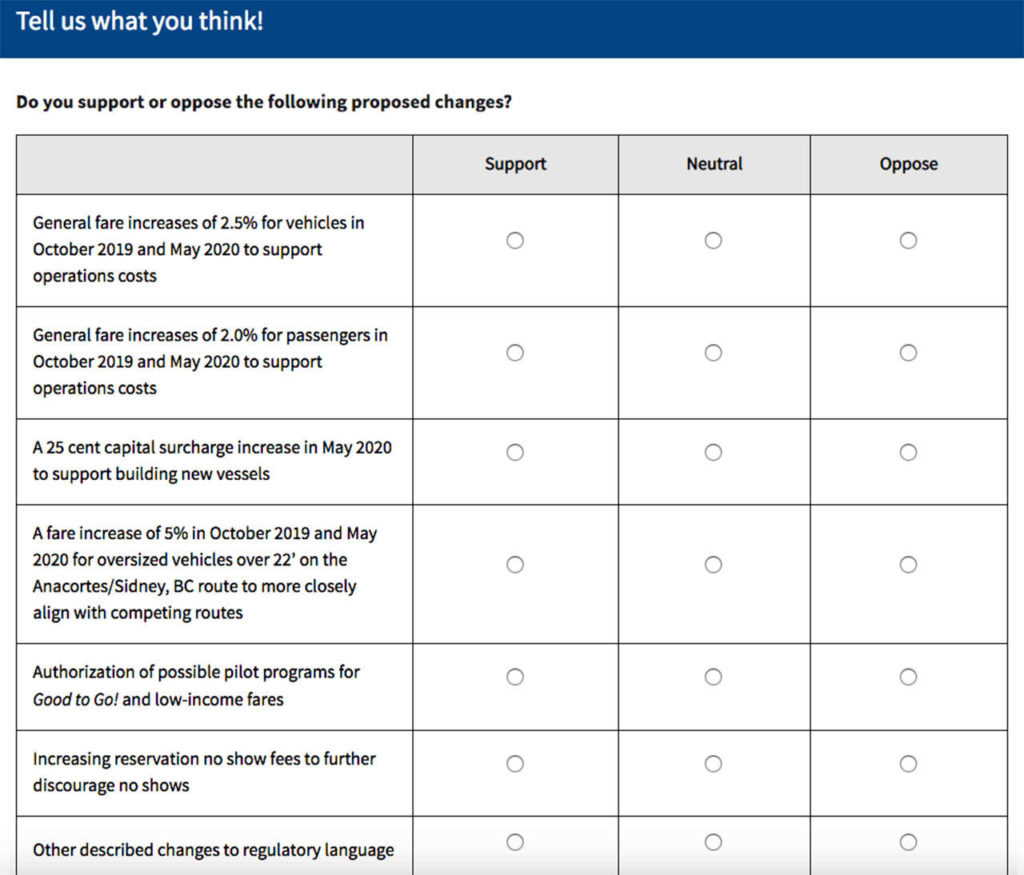MUKILTEO — It’s going to take more green to ride on one of those big green-and-white boats.
Washington State Ferries needs money, and it looks like boosting fares across-the-board will be the way to get it.
The Washington State Transportation Commission has drawn up a plan to increase fares in two steps.
If you have opinions on what’s proposed, you have all month to make yourself heard by the ferry fee overlords.
The first phase, starting Oct. 1, includes a 2.5 percent fare increase for cars and 2 percent for passengers.
The second phase, starting May 1, 2020, repeats the 2-percent passenger and 2.5 percent vehicle increases. It also calls for the capital surcharge, now a quarter, to double to 50 cents on each fare.
Do the math: Current round-trip fares for the Edmonds-Kingston ferry is $8.50 for passengers and $38.30 for standard cars. Mukilteo-Clinton riders and drivers pay $5.10 and $22.80 respectively.
The plan also calls for an additional 5 percent increase for oversize vehicles on the Anacortes-Sidney, B.C., route.
The fare changes are not final — yet.
The commission has set up an online page for the public to express its support or opposition to each element of the proposal. There’s also space to provide feedback on the money-raising plan. It can be found at www.ferryfarecomments.participate.online.
Commissioners will review feedback before taking final action on Aug. 6. The commission last raised prices in 2017.
State lawmakers and Gov. Jay Inslee approved a new transportation budget requiring the ferries come up with $407.9 million in fare revenue in the 2019-21 biennium, which is $9.6 million more than the last fiscal cycle. The capital surcharge is for vessels, such as construction of a new $187 million, 144-car Olympic-class hybrid-electric ferry.
The fleet of water workhorses is aging. Of the 22 ferries, 12 are slated for retirement by 2040. The Hyak recently sailed its last voyage after 52 years. (Want to buy it? It’s for sale.)
The fare hike proposal also has two pilot programs.
One calls for testing of the electronic “Good to Go!” system, used on highways and bridges, to collect ferry fares at toll booths. Another program, contingent on receiving funding from the Legislature, would offer a reduced passenger fare for low-income customers. If implemented, both pilots would run for up to three years.
Earlier this year, the state held community forums around the region about the long-range plan and ferry fare increases.
About 50 people attended the Mukilteo meeting in May, when a panel of 16 ferry officials and planners fielded questions and listened to suggestions. Several ferry commuters spoke in favor of having a “Good to Go!” system to speed up lines at the toll booths. Most regular riders opposed paying more for their daily needed ride. Some suggested tourists pay up.
The online survey on proposed changes is through July 29. It includes a space for write-in suggestions.
Andrea Brown: abrown@heraldnet.com; 425-339-3443. Twitter @reporterbrown.
Ferry fares feedback
Online: Go to www.ferryfarecomments.participate.online.
Email: transc@wstc.wa.gov and put “Ferry Fares” in the subject line.
In writing: Washington State Transportation Commission, P.O. Box 47308, Olympia, WA 98504-7308.
More info: www.wstc.wa.gov
Talk to us
> Give us your news tips.
> Send us a letter to the editor.
> More Herald contact information.

 Survey on proposed fare increases. (Washington State Transportation Commission)
">
Survey on proposed fare increases. (Washington State Transportation Commission)
">
























